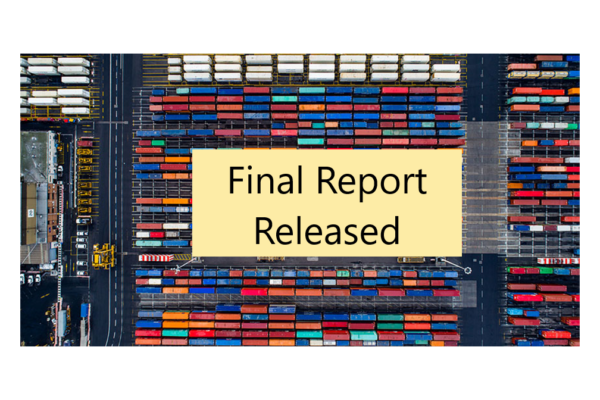The Productivity Commission’s final report into Australia’s Maritime Logistics System was publicly released on 09 January 2023. The final inquiry report had actually been handed to the Australian Government on 21 December 2022 and its release held over until yesterday. It examines the performance of Australia’s maritime logistics system, long-term trends in system performance, competition, industrial relations, infrastructure constraints and technology uptake.
We expect to hear comments from industry spokespersons about the report very soon. Both the Freight & Trade Alliance (FTA) and the Australian Peak Shippers Association (APSA) have said they will be making official statements in the coming days.
Meanwhile, a set of Key Points has been issued by the Australian Government – to read the full report, refer HERE. We reprint the main points below:
Key Points
Higher productivity at Australia’s container ports is achievable and would deliver significant benefits.
• Considerable variation in performance both within and across Australia’s container terminal operators points to potential productivity gains from more consistent (high) performance.
• Inefficiencies at Australia’s major container ports directly cost the Australian economy about $600 million a year. Ports also have large indirect impacts on Australian businesses and consumers, so that any sustained disruptions to imports or exports magnify these costs across the economy.
• Australia’s major container ports rank poorly in work that just looks at ship turnaround times. But the international ports with the fastest turnaround times have considerably more capital than they need to efficiently handle current throughput. Use of more capital in Australia would reduce ship turnaround times but raise costs; the outcome would not necessarily be efficient. Faster turnaround times are good, but not at any cost.
Infrastructure needs in the maritime logistics system are being addressed.
• Container port operators are investing to accommodate bigger ships, as are operators in other parts of the marine logistics system. There is no need for government intervention to encourage the use of bigger ships.
• Plans are in place to increase the share of freight moving to and from most major container ports by rail over the coming decades. Any further government investment needs clear cost–benefit assessment.
• All state governments have freight and transport strategies that cover future port infrastructure needs. Evidence does not suggest that more plans are required or existing plans will not be implemented.
The adoption of technology at Australia’s container ports is broadly in line with international practice.
Workplace arrangements lower productivity — incremental changes to the Fair Work Act are needed.
• Disruptions during recent enterprise bargaining imposed large costs on businesses dependent on maritime freight. The Government has amended the Fair Work Act to seek to limit intractable bargaining, but more effective remedies are needed to reduce industrial action that harms consumers, importers and exporters.
• Limits should be placed on clauses in container terminal operators’ enterprise agreements that are highly restrictive and constrain the ways that workers and equipment can be deployed.
Lack of competition in some parts of the maritime logistics system means consumers pay too much.
• Transport operators have no choice about which terminal they use when picking up or dropping off a container, so must pay whatever price a terminal operator sets. Recent rapid increases in terminal access charges (TACs) have flowed through to cargo owners (and consumers). Voluntary protocols to address terminal operators’ abuse of market power should be strengthened.
• Transport operators and cargo owners are paying fees to shipping lines for the late return of containers even where the delay is because empty container parks are full. The exemption for shipping contracts, which means that these fees fall outside the scope of the Australian consumer law, should be removed.
Concerns about domestic shipping capacity and training can be met through modest measures.
• The resilience of Australia’s maritime supply chain could be improved by reforms to coastal shipping and repealing Part X of the Competition and Consumer Act.
• Australian-flagged vessels are not a prerequisite to meeting maritime skill requirements. If skills shortages were to occur, these are best addressed by cadetships and skilled migration.
We also refer you to the article we posted mid-December: Container Terminal Profits Under Scrutiny.
Talk to us here at Colless Young for logistics strategies and solutions. As licensed Customs Brokers and International Freight Forwarders, we offer professional service and advice on all your international trade and shipping requirements. Colless Young provides a complete range of import and export logistics services, both air and sea cargo, at all major Australian ports and airports. Call us for updated shipping schedules and freight rates.\

